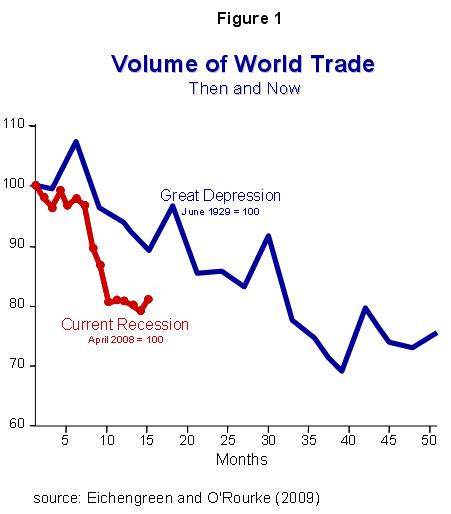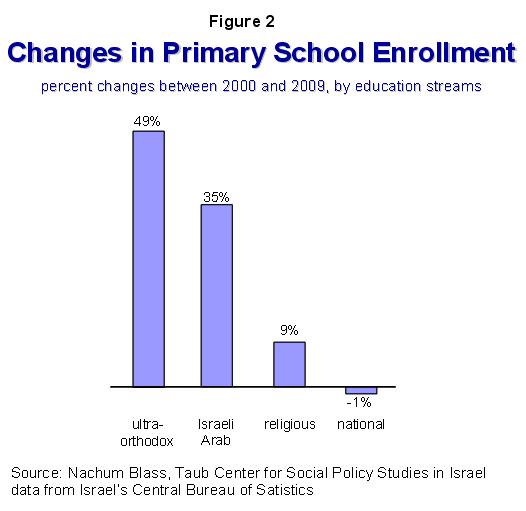The Worst Threat of All
by Dan Ben-David Many illusions were shattered during
the decade ending next week. It was a
decade that began with Camp David and ran head on into a murderous intifada; a
decade beginning with a soaring high-tech that crash-landed within a year; a
decade that America began as the world’s only superpower, and within less than
two years had national symbols crash into the soil of reality; a decade in
which a small country discovered how limited its ability is to defend its towns
from threats from the skies and its soldiers from threats from below the
surface; a decade in which the superpower discovered its limited ability to
deal with small threats with an extremely dangerous potential. In many respects, this decade of
illusions was too similar to 1930s. In
the national security realm, the countdown began for the great cataclysm of the
forties. Are the signs accumulating in
the area of national security this decade pointing to an outcome with similarly
catastrophic potential? In the socioeconomic realm, memories
from the 1930s received a place of honor during the past year – and not by
coincidence. During the first twelve
months of the Great Depression, global output fell by around 13 percent, a
figure echoed in the first twelve months of this current crisis. Eventually, as Eichengreen and O’Rourke so
vividly show in their recent study, output continued to fall during the
Depression and after three years, there was an overall decline nearing 40
percent in global industrial output. The stock market crash during the
Great Depression reached 20 percent at the end of the first year. This time, the collapse during the first
twelve months was much greater, approximately forty percent. In recent months, there have been signs that this
freefall has stopped and there have even been some relative increases. That said, the overall decline in today’s
global stock markets is identical to what it was then at this stage of the
Great Depression. It is important to
point out that that crisis evolved in a series of waves, and within three years,
the average value of stocks world-wide was 70 percent below its value at the
beginning of the Depression. One of the greatest policy lessons
from the Great Depression was in the area of international trade. Countries that saw a steep rise in
unemployment adopted autarkic policies of closing their borders to imports, with
the intention of protecting their workers – which only magnified the
Depression’s blow on other countries. The
result were trade wars that substantially reduced world trade and only worsened
an already bad situation. As figure 1
indicates, during the first three years of the Depression, world trade fell by
about 30 percent. 
This time, western economies have been
working together to minimize the recession’s damage – with coordination and
cooperation between governments and consultations between Central Banks. Despite this, the decline in trade this past
year was even sharper than it was during the Great Depression. During the Depression’s first year, global
trade fell by less than nine percent – while during the first year of the
current crisis there was a decline of fifteen percent. During the first half of 2009, the decline
halted, and it is possible that we are changing direction. Israel’s export statistics this past month
point to a sharp positive turn-around. We
may be at the beginning of a possible emergence from this severe crisis. Hopefully, we will then finally open our eyes
and stop looking at the past month, the past quarter, or even the past year –
and start seeing the big picture that reveals a surprising perspective of the
speed at which Israel is speeding towards its future. That future is sitting today on
classroom chairs. Who is sitting there? What kind of a toolbox is it receiving? There is a crucial need internalize how
quickly changes took place during just one decade and understand the
implications. Israel's education system has four
streams: state, state-religious ultra-orthodox and Israeli Arab education
streams. As indicated in figure 2, at
the end of the decade now ending, there are less primary school pupils in the
national education stream than there were when this decade began. In contrast, the national-religious primary
schools have seen a nine percent increase since 2000. The number of primary school pupils in the
Israeli-Arab stream grew by 35 percent, while the number of ultra-orthodox
pupils grew by 49 percent. All of this
transpired in just one decade. About
half of all the primary school children in Israel already study in either the
Israeli Arab stream or the ultra-orthodox stream. 
This would be a good time to take
notice of what Israel’s next generation is studying. is it receiving the tools so necessary for
coping successfully in a modern and competitive market? If these children adopt their parents
work norms, then what can Israel look forward to in a number of years? Last year, the share of non-employed primary
working age (25 to 54) men in western countries belonging to the OECD was 12.5
percent (figure 3). The percentage of
non-employed Israeli Arab men was almost twice as high. Out of the ultra-orthodox males that are of
primary working age, over 70 percent were not employed. Among females, 74 percent of the Israeli Arab
women and 46 percent of the ultra-orthodox women were not employed, compared to
only a third in the west. 
Could such rates of non-employment be
characteristic of the majority in a first-world country? Could a non-first world country survive in
this Middle-Eastern neighborhood? And what about the current majority, that
is destined to become the minority? Non-employment
rates of 16.5 percent among prime working age non-ultra orthodox Jewish males
may look good when compared to other groups, but they are nonetheless a third
greater than is common in the west. How
could this happen? One
explanation is the education that Israel’s children receive in the basic
subjects. Recent studies focusing on
the quality of education the importance of education in core subjects affects
on an individual’s income and the country’s standard of living. A new study by the Taub Center for Social
Policy Studies in Israel, which will come out in the upcoming report on the
country’s society and economy, summarizes an entire decade of international
exams that Israel participated in, comparing the country to a fixed list of 25
OECD countries in each of the years. Since 1999, Israel has participated in
five different international exams in mathematics, science and reading. In all but one of the exams over the past
decade, the achievements of Israel’s children were below every single western
country. In light of the fact that since
the 1970s, Israel’s living standards are steadily falling farther and farther
behind the leading western countries, these outcomes are not indicative of a
change in direction in the offing. Educational gaps within Israel over
the past decade were higher than the gaps within each of the 25 OECD countries
in each of the years. Since economic
gaps in Israel are already among the highest in the west, and in view of the
fact that the education system is the primary jump board to the labor market, then
how could one expect any future improvements when education gaps among seven
million Israelis are greater even than the huge education gaps between 300
million Americans? Since 1999, the educational
achievements of Israel’s weakest students, those in the bottom fifth
percentiles, are lower than the weakest students in every one of the 25 OECD
countries in every one of the exams. This
is a country with one of the western world’s highest poverty rates – and in its
children, one can see what the future holds in store. It is important to point out that pupils in
ultra-orthodox schools, who do not study math or science at core curriculum
levels, do not participate in the international exams. In other words, the children of Israel
managed to garner these problematic achievements without any assistance from
the ultra-orthodox kids. During the decade since 1999, Israel
passed a milestone when its future formally parted ways with its past. The generation that once sat on Israeli
classroom chairs received more Nobel Prizes in the Sciences per capita than any
other country in the world this past decade.
During this same decade, the achievements of Israel’s top pupils, those
in the top 5 percentiles, placed them close to the bottom of the western world
in every single exam (see table). How
ironic it is that while we receive such a reminder of the potential that Israel
society has – we also witness the terrible bungling of the baton’s passing from
our generation to our children’s. 
It is possible to see the picture that
developed here during the decade ending next week and return our heads to the
sand. We can look for false comfort in
the delusion that this is destiny. We
can continue to depend on politicians who act as though there is nothing that
can be done. We can ignore, and we can
pack suitcases. But
there are also other possibilities. We
can stop incessant bickering on side-issues, and start distinguishing between
what is truly important and what is not.
Dreams can not be a substitute for an operational plan – and there is
such a plan. The kind of systemic
reforms required in education, employment and in other areas do not have a
chance of passing in the current electoral system in which personal and
sectoral incentives far outweigh national concerns. When instability is inherent in the
system, when the executive branch comprises heads of competing political parties
who view policy as a zero-sum game – where your failure is my success – when a
third of the legislative branch is in the executive branch while the other two-thirds
do all the can to bring down the first third, when all of the fragments of
parties representing the heart of Israeli consensus barely constitute a
majority in the Knesset, there is no other issue more important for saving the
country’s future than a comprehensive change in Israel’s system of government. I happen to favor a particular system
that I have often written about in the past – with a president as chief
executive and MKs all having to get elected on a personal basis to fixed terms
of office, with a complete separation of powers between branches that includes
checks and balances which will enable governance on the one hand and oversight
on the other, with cabinet ministers who are chosen to their positions not
because they head political parties but because they are people who actually
know something about the offices that they head – but this is not the point. There is no perfect system, and there are
other possibilities, The point is that
we may not have another opportunity to learn from our mistakes. This is a time for real leaders, and
there are some in the Knesset, who understand the importance of the hour and
what will be their place in the history of the Jewish people if they don’t
start taking care of its home. Each one
cannot do it on his or her own. But
together, they can. This is one of our
best and last opportunities. The decade
that begins next week must be our reality check decade, otherwise it could be
the countdown decade.
|